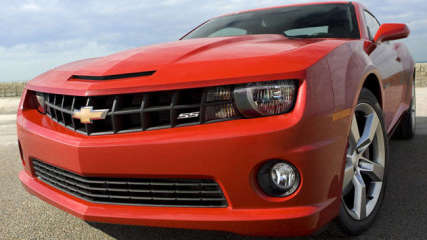SUV's 2012 Review
By Paul Gover · 01 May 2012
There anyone left in Australia who is not in love with some sort of SUV?Macho looking wagons are the family cars of the 21st century and nothing proves it more than the continuing boom in compact SUV sales. Every month the numbers go up, not just deliveries from dealerships but also the selection of showroom starters. When we decided to rate the runners, as we did last month with small cars, there were far more hopefuls than heroes.The Hyundai ix35 is under-done on styling and suspension, the Mitsubishi ASX is too much like a truck, the Suzuki Grand Vitara is best for the bush, and theToyota RAV4 is flat-out too old. They might be nice, but nice is not enough.So we came down to a four finalists as usual and they tick all the boxes. The Mazda CX-5 and Subaru XV are new and funky, the Kia Sportage still rules for value and local tweaking, and the Volkswagen Tiguan has the right badge for brand snobs.I have driven them all before so the comparison run is more like revision than starting from scratch, although there are still some surprises and lots to consider before final judgement.VALUEThis time we left the final four to you. We want to consider what customers are choosing,, not a set of dream machines, even if that means a disparate group that is something of a mis-match on price and equipment.Surprisingly, the Mazda is the cheapest in our field at $33,540 for the front-drive Maxx Sport, then comes the Subaru at $34,490 for the 2.0i-L, followed by the Tiguan 132 TSI Pacific at $35,990 and then Sportage Titanium at $39,720.But it's not just about price, as the Kia ticks all the equipment boxes and also gets a diesel engine, while the Volkswagen runs up short on some stuff - including a rear-view camera - that should be standard in 2012. As always - at least until the BRZ sports car - the Subaru only comes with all-wheel drive and the CX-5 choices reflect its place as Mazda's new SUV hero and the replacement for the larger CX-7.To put things into sharper focus, the CX-5 range runs from $27,800 right up to $48,190, you can buy an XV priced from $28,490 to $34,490, Tiguan stickers span from $24,490 to $42,990 and the cheapest Sportage is the front-drive petrol car at $26,730.Of course, the Kia scores with its five-year warranty , but running costs also favour the CX-5 with Skyactiv technology that gives it fuel economy of 6.4 litres/100km.TECHNOLOGYThe latest Sportage Platinum finally picks up the satnav promised from day one in Australia, complete with traffic warnings. But there are now two clocks and no temperature display, while the Bluetooth audio streaming as not as good as it was. Hmmm.It's diesel engine means top torque, but surprisingly - perhaps it's down to size and weight - it trails the leaders on fuel efficiency. Dig deeper than the trinkets and it's all about the Skyactiv stuff in the CX-5, which brings a very efficient 2-litre petrol engine and six-speed auto complete with stop-start. That's good because the Mazda is a little drab compared with the Hyundai, and some of the costlier cars in the range.The Subaru looks newest and is well equipped, but its engine - despite stop-start - is lacklustre. It is missing any real verve and the manual gearbox can be a little difficult. It's a good thing it has cushy, lovely suspension.The Volkswagen has a great reputation but there is no reversing camera and no satnav, not even a big display screen in the dash. People who expect to be impressed when they first slide into a Tiguan will be disappointed. They will also be disappointed by the worst economy in the group, although this is partly offset by maximum power.DESIGNThe Tiguan looks old and boxy. There is not getting away from it. And, inside, it's black and drab and proof that the substance-over-style approach of the original Beetle still lurks in Germany. The Volkswagen might do the job, and the boot is easy to load, but efficiency comes well ahead of kerb appeal. The CX-5 is a modern update of the Tiguan look, still built around a basic box but with some nice tweaking and trimming. It's the car the women in the Carsguide crew rated tops, although they could have been influenced by the badge and a classy cabin that is nicely styled and well finished.The Kia has a different shape and that's both good and bad. It steps it away from its Hyundai clone and helps it make an impact in traffic. The cabin reflects some smart thinking but the finishing is not as good as the Mazda, despite all the nice bells and baubles.Which brings us to the Subaru. It's a genuinely youthful shape, looks great in the XV's Subaru orange, and turns more heads than the other three combines. But the XV is a bit plain inside and the design work leaves it short of back-seat room and luggage space, especially compared with the Kia and Mazda. The boot is more like a Mini and nowhere good enough for pram people.SAFETYFive-star safety is what you expect and what you get here. Ok, we're still waiting for the official ANCAP rating on the CX-5 but the Mazda has been chosen as a top safety pick by the Insurance Institute for Highway Safety in the USA. There are three child seat anchors in all four, they each have ABS brakes and stability control, with six airbags on three and the Subaru going to seven with knee protection in the XV.Mazda adds a tyre-pressure warning for the CX-5, and has lane departure warning available on some models, while Kia shows an off-road bias with downhill brake control in addition to hill-start assist. The VW has a rollover protection system but the lack of a rear camera is a glaring shortcoming in this field. The Subaru and Kia also score with full-sized spares, not space savers, although this decision really hurts boot space in the XV.DRIVINGIt's hard to make direct comparisons, but here I go. The Kia has the biggest cabin and the most equipment, which makes driving nice. It also rides well, is relatively quiet, and has a really punchy engine.The Volkswagen is nothing special, and that's a surprise with some many impressive models in the family. It just feels old, from the drab cabin to the response from the DSG gearbox, although it does everything I ask without complaining.The Subaru wins me with its looks and supportive seats, but the cabin is too small against these rivals and the engine and gearbox are less than impressive. Fair but not good. Then again, I love the suspension, with the plush ride and quietness it brings.The Mazda? Very nice, but. It gets along pretty well, the driving position is good, and I just know that it's making the most of every litre in the tank. But I remember the arrival of the CX-7, and how it felt as more like a sports car than an SUV. And this time the CX-5 has not moved forward enough when everything new is expected to bounce out ahead of the pack.When we head out for some gravel road and dirt-track kilometres, just to check if the SUVs will survive out of the city, we quickly discover a lack of front-end clearance in the Mazda. The torque of the Sportage is great for hills and the Subaru has wonderful suspension that reflects quality engineering.But then we get to loading, and the boot is the XV is a fail. The Tiguan is good, the Mazda is really good, and the Sportage does all we ask despite a full-sized spare beneath the floor. When it comes to parking, the Tiguan suffers without a camera and the rear corners of the Sportage create nasty blind spots.The Mazda is noisier than I expect on coarse bitumen roads, I worry about the economy in the Kia, and the Volkswagen leaves me cold.But driving is not everything, and I also have to consider the badge appeal of the Tiguan, the rock-solid quality and dealer support of the CX-5, the all-wheel drive security and long-term Subaru reputation of the XV, and the equipment and warranty of the Sportage.VERDICTThe winner? It has to be the Kia. The Sportage is still as impressive as when it finished runner-up in our 2010 Car of the Year contest and comes fully loaded, just the way Aussies like it. It has a huge cabin, drives nicely, gets lots of kilometres between stops with that diesel engine, and has that five-year warranty to provide security for shoppers.The cabin quality trails the newer Japanese SUVs, and the steering still feels a bit wonky for the first 10 minutes, but it is truly the one you would be happiest driving home to the family. The CX-5 is a very close second and would probably have been first with more equipment and an engine swap. I drove an all-wheel drive CX-5 diesel auto straight after the comparison closed and it got me thinking.But you cannot judge what you do not have and, just as a CX-5 with the lot would have been punchier and more appealing, the Sportage would still finish on top if we slapped the badge on a Porsche Cayenne for the same money.I like the quietness and comfort of the CX-5, as well as the cabin quality, but it's not the great leap forward I expected from Mazda. It's doing a lot with Skyactiv but, just like BMW with its overdone emphasis on EfficientDynamics, the mechanical stuff only counts at the pumps and for dinner party bragging.The XV is a coulda, woulda, shoulda sort of car. And third. It's more youthful and has a lovely ride, but it falls short on space and performance. Some people also find the cabin is too drab and underdone, particularly compared with the Sportage.And the Tiguan? I expected more, but wasn't really surprised.Fourth place is a reflection of its ageing design, and the focus on SUVs that has made Japanese and Korean cars so popular, and on reflection perhaps we would have done better with a RAV4 in the field. But you cannot judge what you don't have. So the Sportage gets across the line by a short-half-head in what is really only a three-SUV contest, proving that the Korean carmaker is more than just a dollar dealer in 2012.















